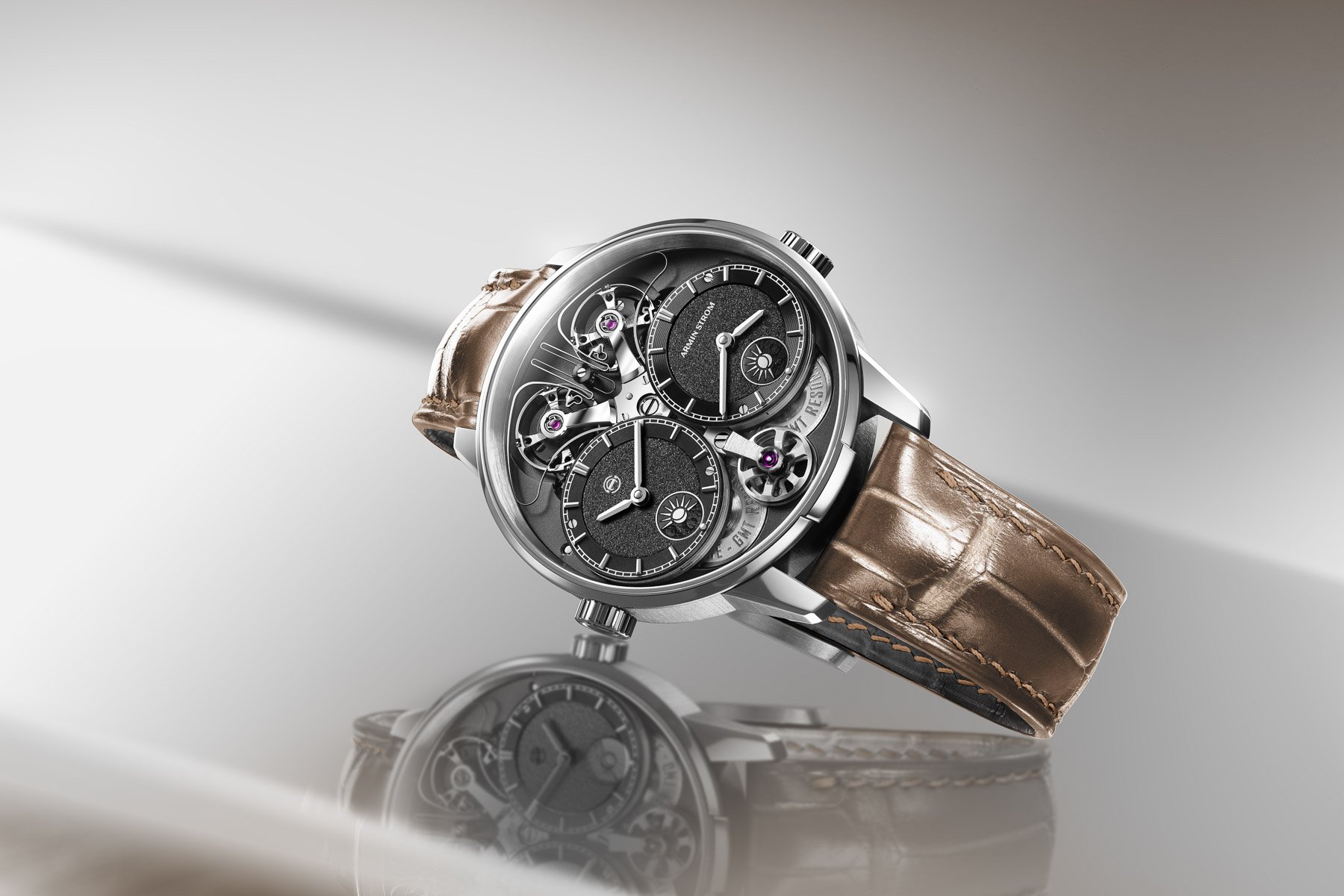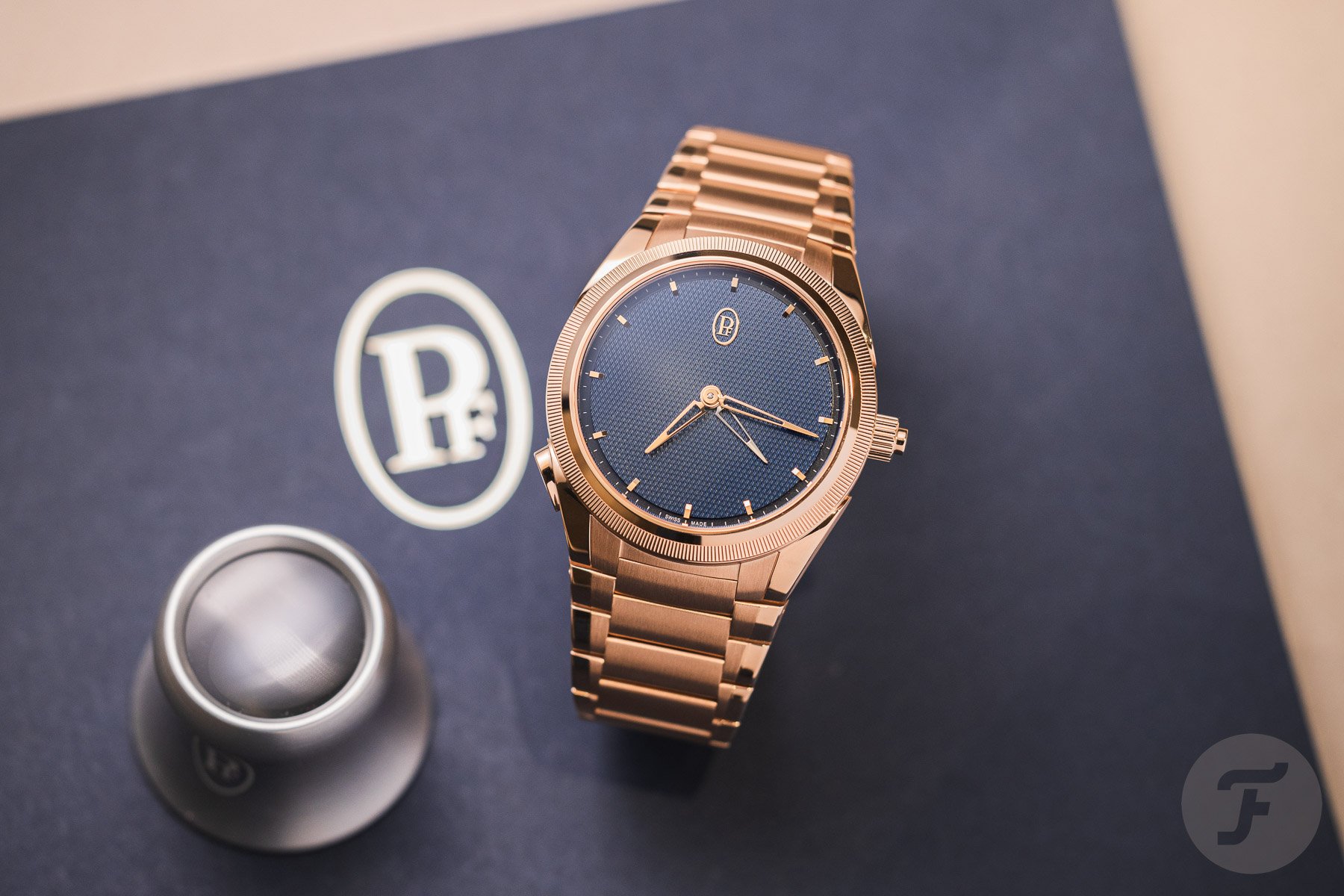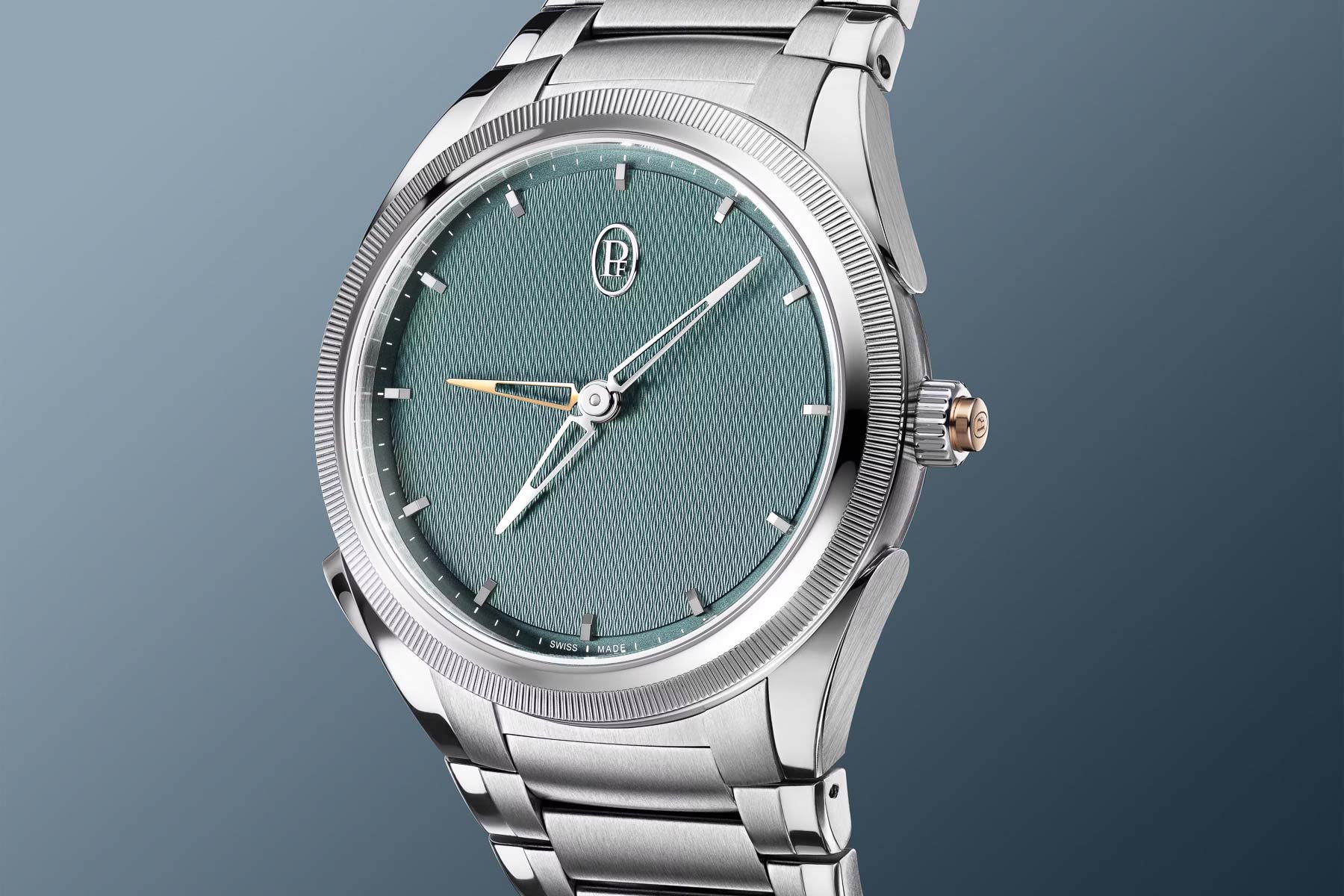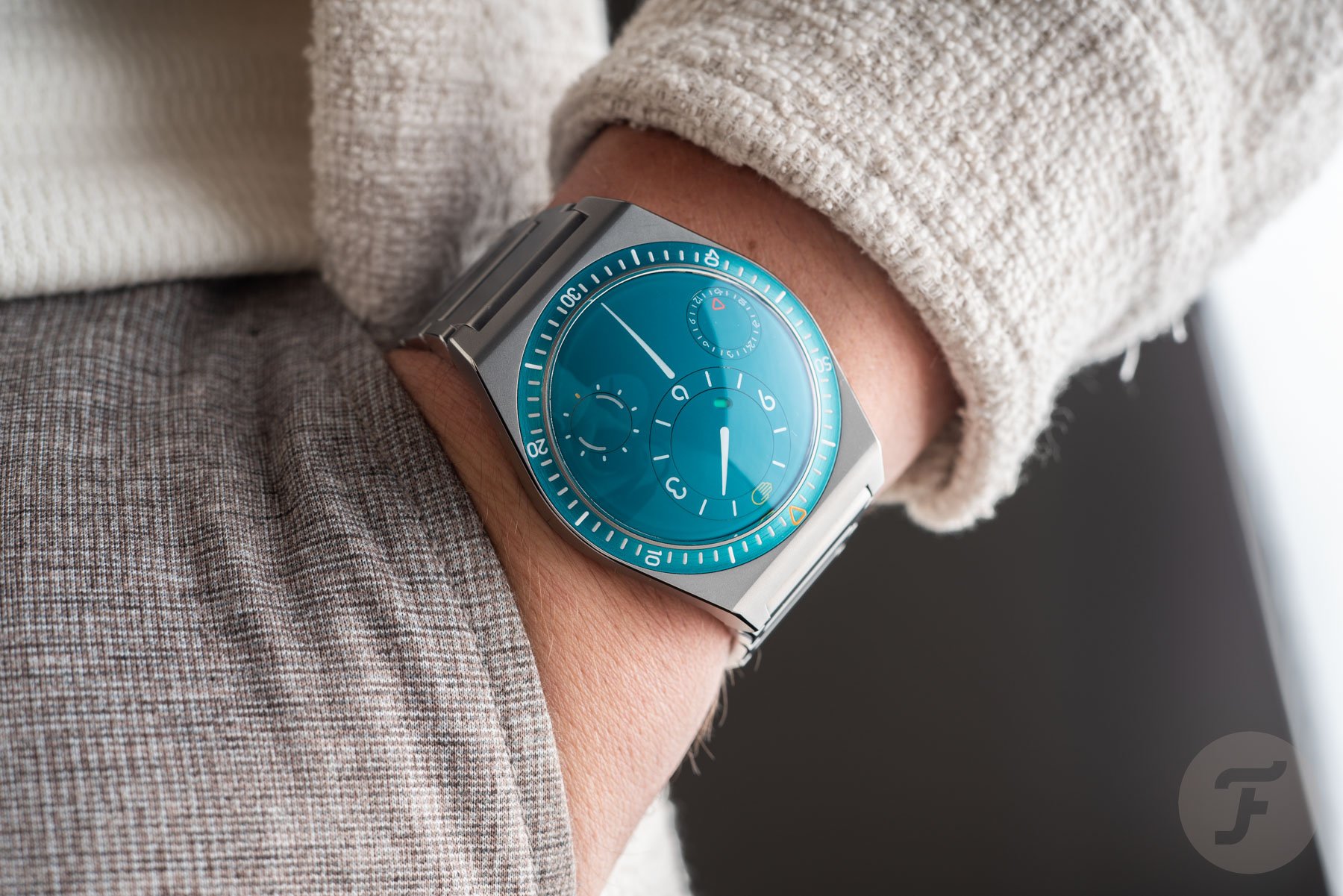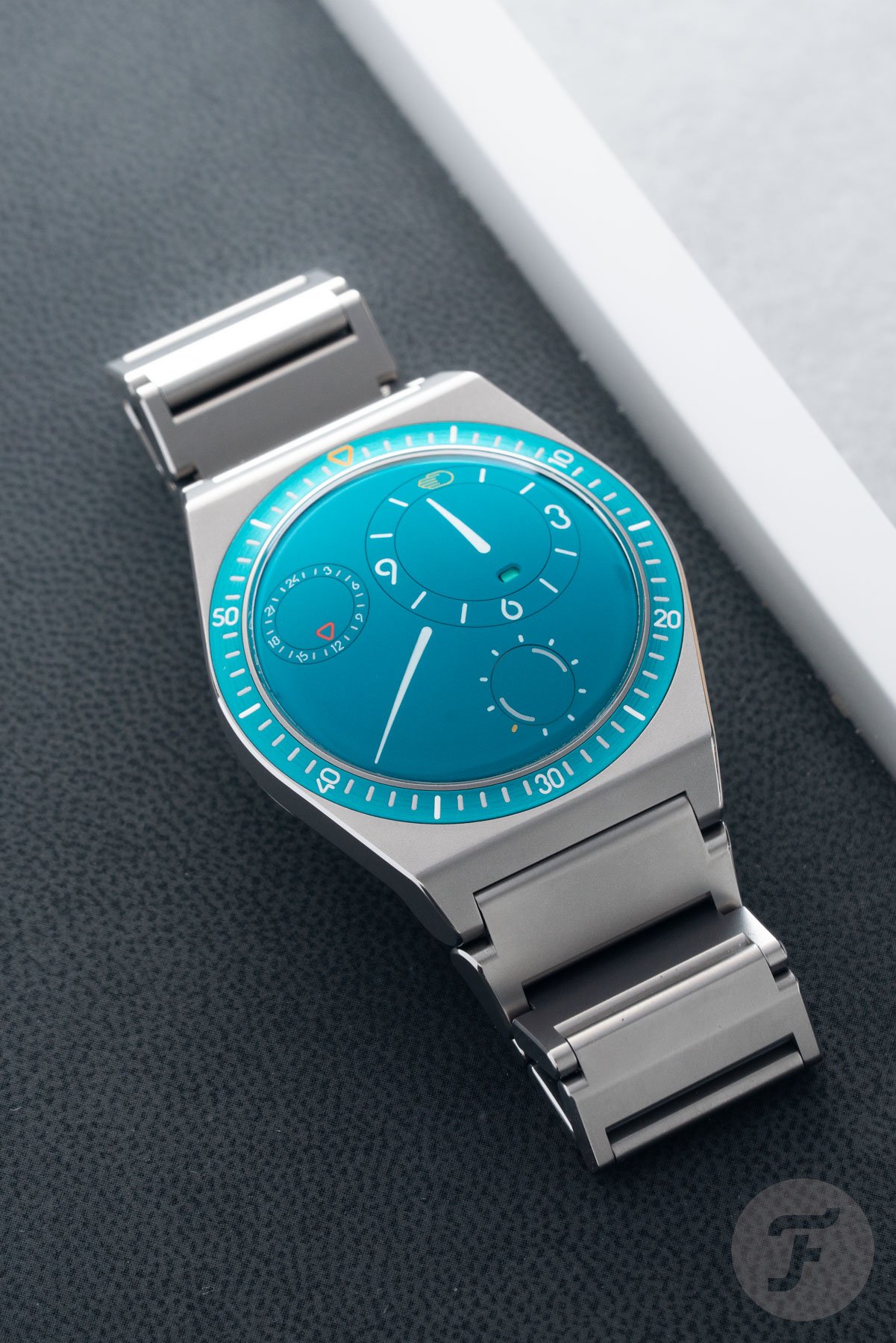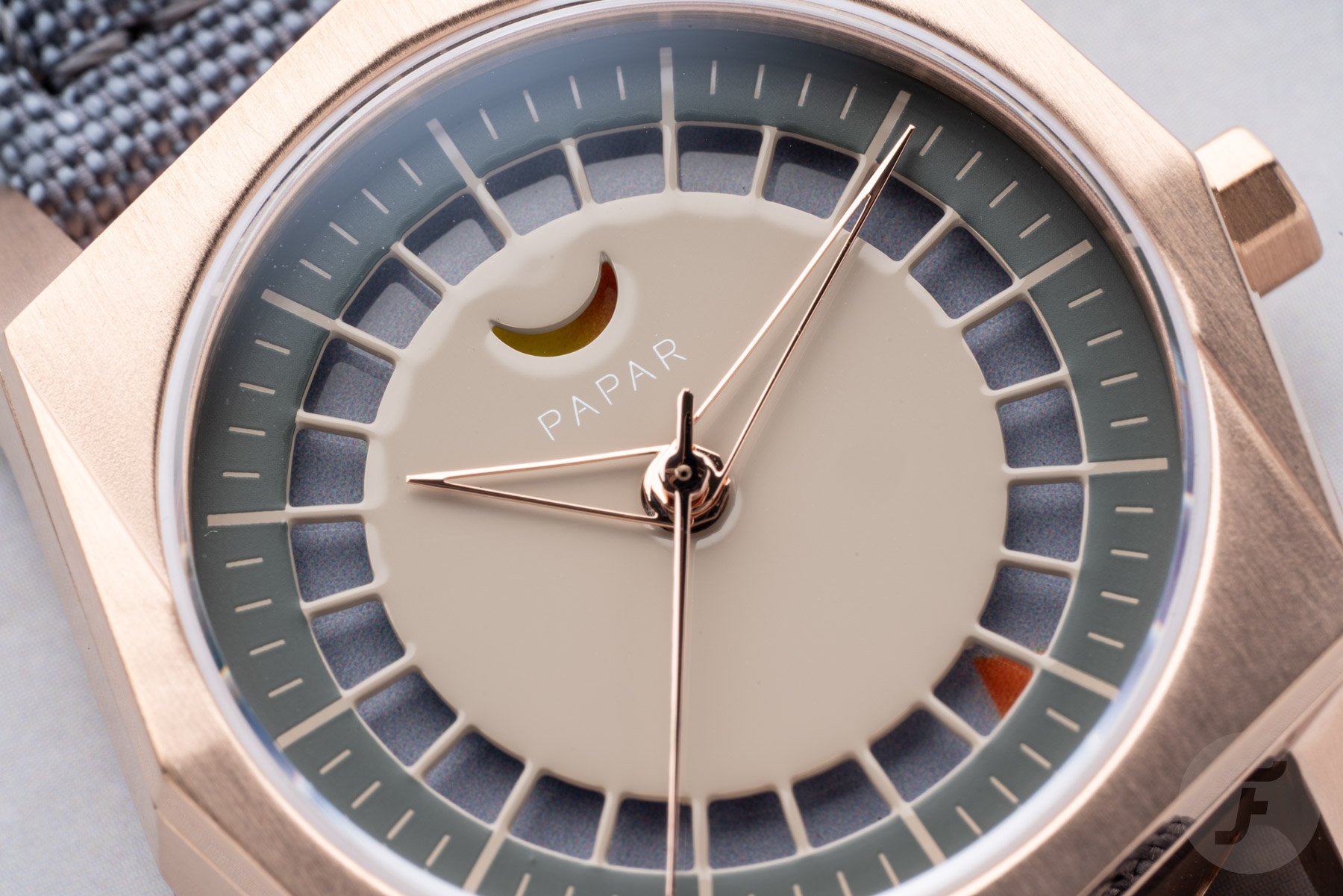Quirky GMT Watches From Parmigiani, Papar, Rolex, And More
Why is there a Rolex GMT-Master II in the picture when this story is about quirky GMT watches? Well, that’s because no matter how far off the beaten GMT path you stray — Rolex set the path with a 12-hour dial combined with a 24-hour hand and a 24-hour bezel, and nearly everybody followed — a “lefty” GMT-Master II “Sprite” or “Starbucks”, will always be the quirkiest. The mirror image of an icon can create so much discomfort for the watch-loving brain that the left-handed “Sprite” and “Starbucks” — IMHO, the watch equivalent of a venti salted caramel mocha frappuccino with five pumps of frap roast, four pumps of caramel sauce, three pumps of mocha, double-blended with extra whipped cream — needed a mention, even if only with a single pic and a few lines. Now that we have that out of the way, let’s look at some original, unexpected, and sometimes very quirky GMT watches.
For the record, Rolex did not invent the concept of a GMT or dual-time watch. In 1925, Longines released the Zulu Time, which displayed two time zones in a 12-hour format. Then, in 1953, Glycine launched the Airman, the first wristwatch to display an additional time zone on a 24-hour scale. Unlike most GMT watches seen today, the Airman used a dial marked from 1 to 24. The Airman also featured a rotating bezel with another 24-hour scale, allowing the hour and minute hands to indicate two times simultaneously. A year later, however, Rolex introduced the GMT-Master ref. 6542 with a much more familiar 12-hour dial and an easy-to-use two-tone 24-hour bezel to distinguish day and night. So many watch brands then followed Rolex’s example, but that’s not necessary. Here are a few remarkable and quirky GMT watches that take a different approach.
Quirky GMT watches: Armin Strom Dual Time GMT Resonance Manufacture
We’re off to a complicated start with the Armin Strom Dual Time GMT Resonance Manufacture. The basic principle of this watch, of which 97% of the components are made in-house in the Armin Strom workshop in Biel/Bienne, is resonance created by two movements integrated into one — in this case, the caliber ARF22. The resonance of both balance wheels of the two parts of the caliber will naturally influence and regulate each other in real time via the mutual sharing of vibrations. The two movements keep each other in balance, counteract wrist movements, and maintain accuracy.
If you have two movements, displaying two time zones is a piece of cake. The Dual Time GMT Resonance shows twin dials and crowns that allow for the independent setting of the time on each dial. The crown on the right side also acts as the sole winding crown for the movement. A closer look at the dials reveals individual night/day discs. When you read that this watch has two movements, you’ll probably think it’s gigantic, but it’s not. Armin Strom miniaturized all the necessary components so that the complicated movement fits into a 39 × 9.05mm case. The case also has a 50m depth rating, which makes it travel-proof, so to speak. The limited edition of 25 pieces in white gold with light blue sub-dials is sold out, but the CHF 95,000 Manufacture Edition in steel might still be available.
Parmigiani Tonda PF GMT Rattrapante: Who needs a 24-hour indication anyway?
The Parmigiani Fleurier Tonda PF GMT Rattrapante is as gorgeous as it is mysterious — a nice way of saying “quirky.” A few things regarding the second time zone stand out and are intriguing. First, the GMT hand hides under the normal hour hand until you hit the pusher in the lower-left lug. Then, the hour hand on top jumps forward, and another hour hand emerges from under it. This lower hand now points out your home time. As you zip through time zones, you keep adjusting the local time. Finally, once your journey brings you home, you click the pusher in the crown. The local-hour hand jumps back, hiding the bottom hand once more as if nothing happened. It’s all made possible by the 215 components of the F501 micro-rotor automatic caliber.
This Parmigiani sure is cool, clean, and clever, right? Well, yes and no. A GMT watch that doesn’t indicate the second time zone in 24-hour style won’t tell you if it’s four in the morning or the afternoon. If you ask me, that’s not the most practical approach. But maybe this watch is more about the idea and the execution than it is about functionality.
CHF 28,700 buys you a 40 × 10.7mm talking piece, for sure, in steel with either a green dial or a blue one. If you want more to talk about, there’s also a version in rose gold with a blue dial for CHF 65,000.
Ressence Type 7: A Belgian viewpoint on the GMT watch
The all-new Ressence Type 7, with its full-titanium dial, case, and bracelet, sure looks like no other watch. The Belgian brand’s first creation with an “integrated-like” design stands out with its signature orbital dial. What you don’t see but is equally original is that the turning dial is filled with oil. The brand burst onto the scene with oil-filled dials, and now the concept is used in a 41 × 14mm watch. That thickness measurement includes the domed sapphire crystal.
The presence of oil makes some people stare at the domed crystal to see if they can tell it’s there. But don’t look for bubbles under it because the oil is invisible, and if you do see bubbles, the watch needs to go in for service. The dial is filled with 2.95ml of oil, creating a super-sharp OLED-screen-like appearance that improves readability from different angles, almost entirely removing distortions from the sapphire crystal.
The watch has a small window that indicates the oil temperature inside the Ressence Orbital Convex System (ROCS 7). When the oil’s temperature changes, its volume also changes. That’s why multiple bellows compensate for the changes in oil pressure inside the module. But that’s enough about the oil; what about the GMT function? A small 24-hour sub-dial on the turning Night Blue or XV Aquamarine dial helps keep track of a second time zone. The Type 7 takes an ultra-clear approach, and the price you’ll pay for such functional clarity is CHF 36,000 (ex. VAT).
Papar Anillo GMT: A “flyer” and a Brutalist at the same time
You will have to look twice to see that the Papar Anillo GMT is a watch with a GMT complication. There are a few reasons for that. The most important one is probably its overall design. The Anillo GMT is like a miniaturized Brutalist building you wear on the wrist. The watch has an angular case with a 36mm diameter, a 12mm thickness, and a 43mm lug-to-lug. Those numbers reveal a bit of the watch’s unusual appearance, yes, but not enough. You have to see the shaped watch with its peculiar proportions and abundance of fine case and dial details on your wrist to truly get it.
I got it and loved it, and it wasn’t because it’s a so-called “flyer” GMT, although that is a surprising feature. To make sure we have everybody on board, the Papar’s automatic Miyota 9075 movement is a “flyer” GMT because one crown position sets the local time and the GMT hand simultaneously, the latter at half pace. The other crown position, however, sets the 12-hour hand separately, making it very handy when flying to another time zone. The Anillo GMT displays the additional 24-hour time zone not with a central hand but through a rotating GMT disc underneath the laser-cut dial.
The watch comes in two versions, both of which are limited to 100 pieces. The steel one is “rougher.” Its case’s dramatic, angular lines stand out because of the bare metal color and the contrast between the brushed and polished surfaces. This watch mimics a building in béton brut. The rose-gold-colored version is a bit softer also because of the warmer colors on the dial. Both versions of the Papar Anillo GMT cost US$750.
There are, of course, more oddball or quirky GMT watches that don’t follow the Rolex-set course. Please let me know which ones you have in mind in the comments below.


